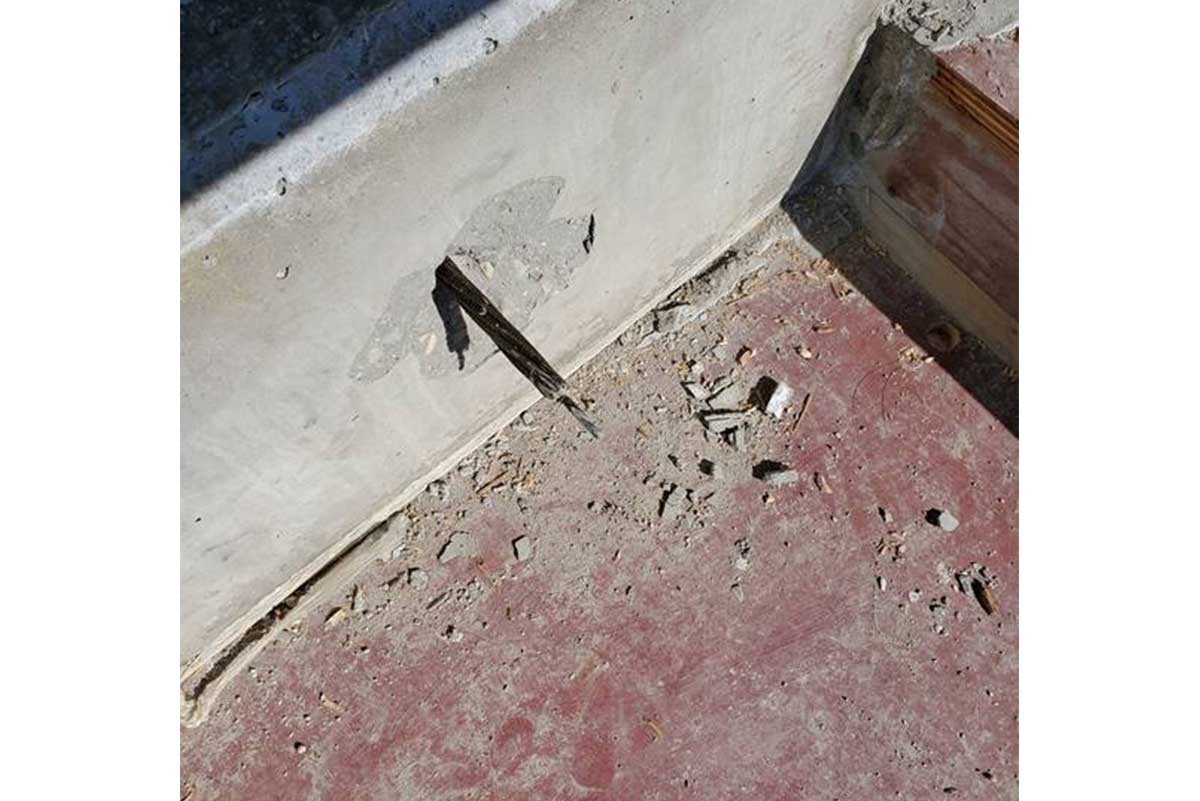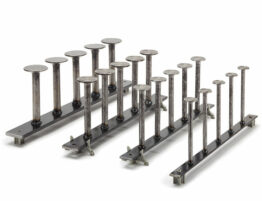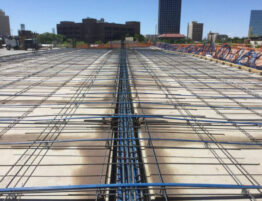
Two critical pieces of a post-tension tendon are the high-strength steel cable that makes up the structural core of the tendon, and the plastic sheathing that keeps the steel from bonding to the concrete.
One of the major challenges of post-tensioning material supply is ensuring that the tendons arrive intact and ready to place. It’s important to understand that, while the tendons are tough (and have been engineered to resist damage), that’s not the same thing as indestructible. The shop has several special tools to allow workers to move and compress the tendons for shipping without damaging the sheathing or the steel strand.
In the field, three things are absolutely critical to prevent damage to the tendons that might lead to repairs or replacement.
- Tendons must be handled as gently as possible given their weight. A hundred-pound coil of steel isn’t an eggshell, but neither is it armor plate. Do not drop the tendons more than 24 inches, throw them, or drag them across the deck. This is especially important for tendons with dead-end anchors attached! A tendon that “lands funny” may bend just before the anchor. A bent tendon cannot be trusted to hold the design tension force when the tendon is installed, and must be discarded.
- Do not use a standard forklift to transport bundled cables. First, it is very easy for the combined weight of the coiled tendon to nick or cut the sheathing where it rests on the forks. Some specifications require that these cuts be repaired prior to the pour, and the coiled nature of the tendon means that there may be dozens of them. Second, it is easy for a single coil to get “snagged” on the forks, and be pulled through the center of the bundle. In this circumstance, the tendon almost always kinks, and the bundle may be harder to unpack because of the fouled tendon. A specially-designed single-fork attachment should be used to move bundled tendons.
- Use a nylon sling – not a chain! – to lift bundles of post-tension tendons from the ground to the deck. Chains may “choke up” or saw through the plastic sheathing for many tendons simultaneously. Depending on the amount of damage done, it may not be possible to repair the sheathing at these locations.
If in doubt, contact Advanced Post-Tension immediately to discuss handling or repairs.



